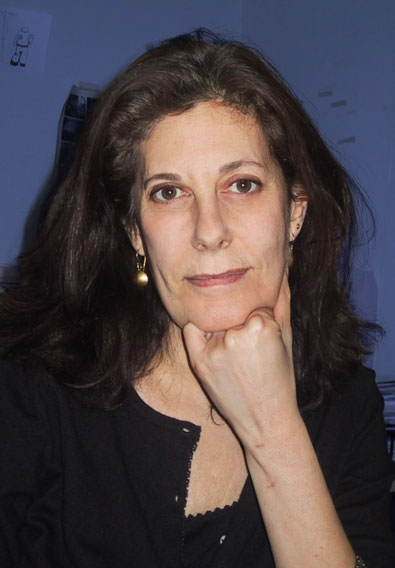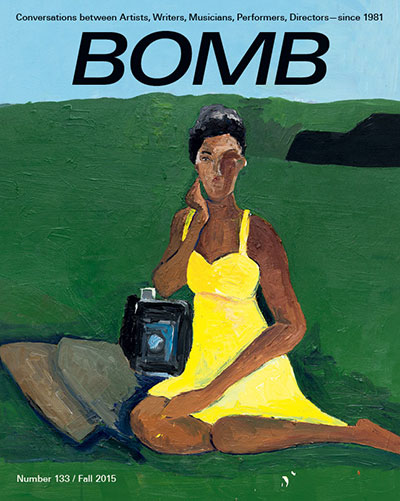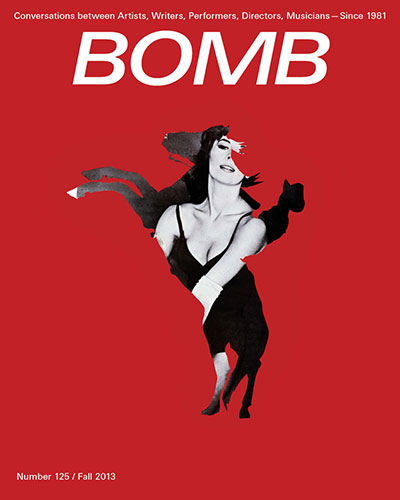

By THIRSTY

Betsy Sussler
Betsy Sussler and a few friends launched BOMB magazine in 1981 with the idea of publishing conversations between artists, writers, musicians, performers and directors without the impediments of critics or journalists. She was made the magazine's Publisher and Editor-in-Chief, positions that she continues to hold today. BOMB, named with a reference to Wyndham Lewis's Blast, a short-lived literary magazine in Britain in 1914, became a publication of New Art Publications, a nonprofit charitable organization, not long after its launch. With support from such iconic contributors as the Andrew W. Mellon Foundation and grants from the National Endowment for the Arts and other governmental organizations as well as loyal support from the artistic community, Betsy Sussler has navigated the publishing waters in expert style for 35 years. It was Stay Thirsty Magazine's honor to visit with her in Manhattan for his Conversation.
STAY THIRSTY: You founded BOMB magazine in 1981 with a small group of artists, writers, editors and filmmakers and it is about to celebrate its 35th Anniversary. As you look back to the earliest days of the magazine and fast-forward to today, how do you feel about the past three and a half decades of your life?
BETSY SUSSLER: Pretty good. I'm still here, and BOMB is stronger than ever. Looking back: BOMB is the sum total of its voices—all 6,000 of them. We specialize in in-depth interviews between artists about the creative process. That means visual artists to poets, composers to novelists to filmmakers. I find our subjects moving, and brave, and honest. So I'm proud of what we've accomplished.
STAY THIRSTY: Do you think that one of the secrets of your longevity and success was the decision to make the magazine a nonprofit organization and not have to live or die on subscriptions, newsstand sales and advertising revenue?

BETSY SUSSLER: Yes. We don't rely on any one source of revenue but rather build on each one of many steadily and toward realistic goals. Our support comes from individuals, foundations, Federal and state grants, earned revenues like subscription and newsstand sales as well as advertising, and, most importantly, our Trustees and our annual Gala—where supporters and artists have been incredibly generous and loyal. Our 35th anniversary is coming up this April. I've always said that support from many strong twigs tied together is preferable to one big log, because if a few twigs come loose, we don't sink, we just tighten our belts.
STAY THIRSTY: You recently completed the addition of an entire digital platform for BOMB. How has going digital impacted the editorial and production elements of the magazine's operation?
BETSY SUSSLER: It's been a wild ride because we have embraced the web, not at the expense of the print magazine, but as an extension of its mandate to deliver the artist's voice. And that is now so much more accessible. Yes, all of our content—from 1981 onward has been digitized and built into a relational, searchable archive at bombmagazine.org. It's free and each year it's used by 1.7 million students, scholars, and artist workers…. That's a big jump from being a quarterly. Production? We have an online counterpart, BOMB Daily, edited and written by the next generation. So production of content is up by 200 percent. We're exhausted but excited. And we could use about four more editors.
STAY THIRSTY: Your Winter 2016 magazine will be your 134th quarterly publication. How has the magazine's mission evolved over the decades as the art world has gone through boom and bust cycles?
BETSY SUSSLER: Boom and bust affects our budget, but not our mission. That remains what it always has been. We started BOMB because we wanted to speak about art the way artists tend to speak about it among themselves. That's very different from how a critic views the work. Artists speak about the making; and that meanders, stops and starts, and has strong historical and intellectual underpinnings that may or may not be attached to high culture. All of that is encouraged and included…(laughter), too.

STAY THIRSTY: You have been very successful at obtaining grants to support the magazine. How has the nonprofit climate changed for you since the Great Recession?
BETSY SUSSLER: Well, it's up and down, but we're 35 now and we run the place like a nonprofit business. Which is to say, we're aggressive and persistent about getting funding because we know we're very good at what we do and provide a unique and necessary service. When BOMB started, I didn't think it would survive: it has done so not only because of tenacity and the quality of its content, but because artists want and need a place to converse about their ideas—we set the stage, but we also have a strong editorial method. The transcripts are treated as scripts in development. Subjects work closely with a BOMB editor to expand upon and clarify their initial conversations. The aim is for a definitive, inclusive document of a subject(s), time and place.
That said, another bust would be very scary; and yet I think that's how the economy seems to behave, not that I know anything about economics, but experience suggests that it would be shortsighted to believe it can't happen again. Honestly, each and every time I don't quite know how we'll survive. So far so good.
STAY THIRSTY: Has the digital revolution made it easier or more difficult for emerging artists to get attention? When thinking about a particular artist for an interview or a feature article, does their digital footprint play a role in your editorial thinking?
BETSY SUSSLER: It's easier for more people to see new work, and for an artist to get it out into the digital world. However, a digital footprint means little to us in terms of who we choose to interview or feature. We have 90 contributing editors, all practicing artists and writers, and we discuss with them and previous contributors to the magazine who they respect and are watching, reading, and listening to.
STAY THIRSTY: Over the decades you have witnessed the rise and the fall of artists, writers, photographers and filmmakers and also the deaths of many. How do you feel about the role BOMB has played and will continue to play in the canon of art history and the preservation of artistic expression?

BETSY SUSSLER: Canon—I don't like that word, but I know what you mean. I think we've turned it upside down. Now preservation of artistic expression, that's something else—in all humility, I think we're legendary.
We've lost too many editors—Craig Gholson, David Seidner, Sarah Charlesworth, David Rattray, to name a few—and not all of them have been remembered as they should be, given their talent, by the culture at large, Sarah being the exception. But their voices are innate to BOMB, and I am grateful for this.
STAY THIRSTY: Did you ever purchase paintings from young, starving, aspiring artists over the years? If so, from which artists and how did your investments turn out?
BETSY SUSSLER: I do buy art, mostly from friends, a few from emerging artists whom I assume need the money. But I don't buy as an investment, and hope I never do. I live with my art; it covers my walls, not unlike Gertrude Stein's salon, and we talk every day.
STAY THIRSTY: What two pieces of advice can you offer for a young artist at the earliest moments of his or her career regarding the media?
BETSY SUSSLER: I can't. Except friends who are journalists have told me that unless you want it remembered, don't say it.
STAY THIRSTY: What is your goal for the next 35 years of BOMB?
BETSY SUSSLER: I'm now working on long-term planning—most importantly on building an endowment, on what a permanent home for BOMB would look like, and on an infrastructure that can survive anyone leaving the organization, me included. So that I can step aside and watch it continue to thrive.
Great questions! Thank you.
Link:




